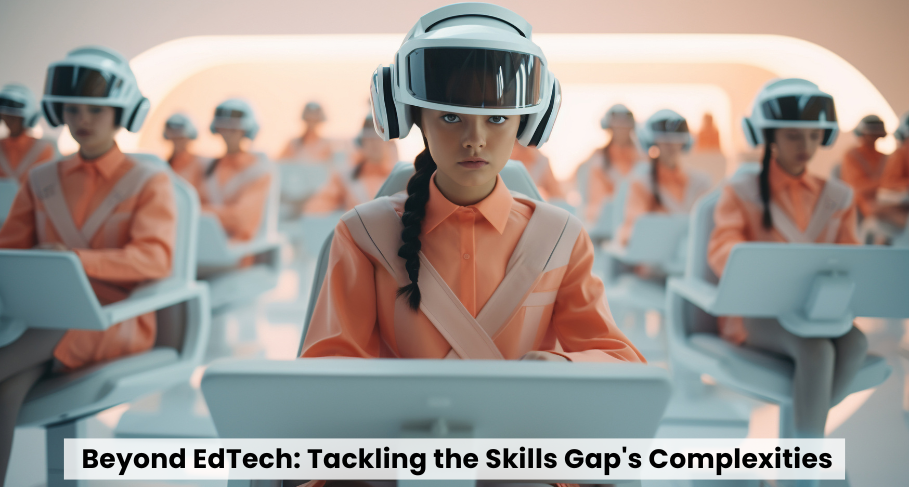Everyone hoped that EdTech could help bridge the growing gap between skills. According to Traxcn, EdTech investments reached $2.9 billion in 2022. However, it has dropped to $712 million in 2023. It is time to explore the question of where the gap arose. The skill gap is a multi-dimensional topic. It is indeed not a good idea to think that simply EdTech is enough to deal with such complexity. There are more layers to explore in understanding the skill gaps and ed tech’s role in bridging the skills gap.
The Limits of EdTech
Access and Equity
For many, quality EdTech remains out of reach, particularly in rural areas and underserved communities where reliable internet and digital devices are scarce. Even when access is available, prohibitive costs tend to worsen existing inequalities.
Soft Skills and Critical Thinking
EdTech tends to prioritize technical skills over important soft skills like communication and critical thinking. Without these soft skills, even technically proficient individuals may struggle in the workplace.
One-Size-Fits-All Approach
Many learners find standardized EdTech solutions do not account for their unique differences, causing disengagement from learning and inadequate skill acquisition.
Overemphasis on Certification
Online certifications are popular, but they perpetuate credential inflation and often inadequately reflect real-world competence.
Decoding Skills Gap
It originates from other systemic challenges beyond technological limitations. The skill gap arises, among other reasons, from a lack of agility in professionals. The focus on continuous learning and career planning as an essential part of the education system is missing. Why is someone pursuing an engineering education? Because there was nothing better to do? Does it look better than a degree in English? Or is there a clear career path for the next five or ten years that demands this education?
Why do skill gaps really occur? Can students not build their skills if they are aware? Do they lack access, or do they lack the motivation early in their careers? Appropriate research must be done as to why the skill gap arises in the first place. One cannot ignore that students’ early careers are usually governed not by individual choice but by following the crowd. Effective results cannot be achieved by scratching these issues’ surface.
These are some questions that need to be asked.
1. Educational Systems: Traditional education models do not match rapid industry changes; hence, graduates lack pertinent critical thinking and problem-solving abilities due to obsolete curriculums and rote memorization methods.
2. Economic Forces: Job markets keep changing due to automation, globalization, and the gig economy, which demand diverse, flexible skill sets beyond what conventional education can offer.
3. Social And Cultural Barriers: Accessing education or career opportunities depends significantly on factors such as SES, race or gender, leading to persistent inequality while limiting marginalized groups’ skill acquisition potentials.
4. Employer Practices: Skill progression among employees is hindered by outdated hiring practices and insufficient investment in worker development. Employers focusing on short-term profits ignore long-term training initiatives for their workforce’s skills.
The Need for Systemic Solutions
To address the skills gap issue, a comprehensive approach that addresses its root causes, such as youth awareness, career planning at an early stage, and independent thought, is necessary.
Holistic Education Reform
Education systems need to be overhauled entirely to focus on critical thinking, creativity, and adaptability rather than technical skills and standardized tests alone.
Stronger Industry-Education Partnerships
Internships, apprenticeships, and curricula based on industry advice are crucial for linking educational institutions with employers and aligning learning outcomes with workforce needs.
Lifelong Learning and Upskilling
Such opportunities should be accessible and affordable through online courses, micro-credentials, or flexible options designed for adult learners.
Policy Interventions
Governments should invest in education and training programmes, promote employer-sponsored training, and address structural inequalities inhibiting skills development.
Nonetheless, EdTech is not a magic formula for addressing the skills gap. The solution lies in adopting a comprehensive perspective that focuses on holistically reforming education, forging relationships between industry players and educators, encouraging lifelong learning, and supporting policies. Thus, we can build an equitable and efficient ecosystem for 21st-century competencies.
